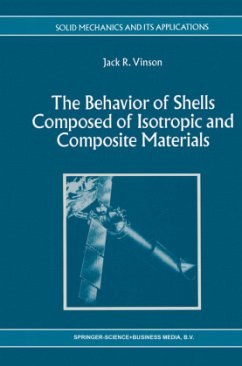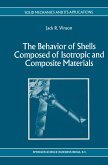Shell structures are used in all phases of structures, from space vehicles to deep submergence hulls, from nuclear reactors to domes on sport arenas and civic buildings. With new materials and manufacturing methods, curved thin walled structures are being used increasingly.
This text is a graduate course in the theory of shells. It covers shells of isotropic materials, such as metal alloys and plastics, and shells of composite materials, such as fibre reinforced polymer, metal or ceramic matrix materials. It provides the essential information for an understanding of the underlying theory, and solution of some of the basic problems. It also provides a basis to study the voluminous shell literature. Beyond being primarily a textbook, it is intended also for self study by practising engineers who would like to learn more about the behaviour of shells.
The book has two parts: Part I deals with shells of isotropic materials. In this part the mathematical formulations are introduced involving curvilinear coordinates. The techniques of solutions and resulting behavior is compared to planar thin walled isotropic structures such as plates and beams.
Part II then treats the behavior of shells, involving anisotropic composite materials, so widely used today. The analysis involves the complications due to the many elastic constants, effects of transverse shear deformation, thermal thickening and offer effects arising from the properties of composite materials.
This text is a graduate course in the theory of shells. It covers shells of isotropic materials, such as metal alloys and plastics, and shells of composite materials, such as fibre reinforced polymer, metal or ceramic matrix materials. It provides the essential information for an understanding of the underlying theory, and solution of some of the basic problems. It also provides a basis to study the voluminous shell literature. Beyond being primarily a textbook, it is intended also for self study by practising engineers who would like to learn more about the behaviour of shells.
The book has two parts: Part I deals with shells of isotropic materials. In this part the mathematical formulations are introduced involving curvilinear coordinates. The techniques of solutions and resulting behavior is compared to planar thin walled isotropic structures such as plates and beams.
Part II then treats the behavior of shells, involving anisotropic composite materials, so widely used today. The analysis involves the complications due to the many elastic constants, effects of transverse shear deformation, thermal thickening and offer effects arising from the properties of composite materials.
Dr. Vinson is H. Fletcher Brown Professor of Mechanical and Aerospace Engineering at the University of Delaware. An established leader in the field of composite mechanics, Dr. Vinson is also recognised for clear and readable exposition. This book complements his bestselling Kluwer textbook The Behavior of Structures Composed of Composite Materials.
'This book is the most modern text to appear on the subject of elastic shells and is highly recommended to structural design engineers, structural analysts, composites specialists, and research engineers involved with shell structures.' Aiaa Journal 32:4 1994
'This book is the most modern text to appear on the subject of elastic shells and is highly recommended to structural design engineers, structural analysts, composites specialists, and research engineers involved with shell structures.' Aiaa Journal 32:4 1994
Dr. Vinson is H. Fletcher Brown Professor of Mechanical and Aerospace Engineering at the University of Delaware. An established leader in the field of composite mechanics, Dr. Vinson is also recognised for clear and readable exposition. This book complements his bestselling Kluwer textbook The Behavior of Structures Composed of Composite Materials. 'This book is the most modern text to appear on the subject of elastic shells and is highly recommended to structural design engineers, structural analysts, composites specialists, and research engineers involved with shell structures.' Aiaa Journal 32:4 1994








